
Furniture For An Emperor In Transition
This project is created for a group architecture exhibition by MMCA (National Museum of Modern and Contemporary Art) in Seoul inside the historic Deoksugung Palace. The furniture will go into the permanent collection of the Museum afterwards.

Deoksugung Palace contains the story of a brave emperor who faced a world in transition. Gojong, the last King of Joseon and the first Emperor of Korea, resided here. While welcoming the modernization and industrialization of Korea, Gojong was also facing diplomatic issues and worries of foreign invasion. His life was overlapped with instability and transitions, while hoping to maintain stability.

This history revealed a series of overlap and transition, from King to Emperor; from serving to ruling; from temporary residence to palace; from a ceremonial hall to a bed chamber; from inward thinking to exposure to the West. The courtyard in front of Hamnyeongjeon compliments the building as the overlap between the ceremonial and the quotidian.
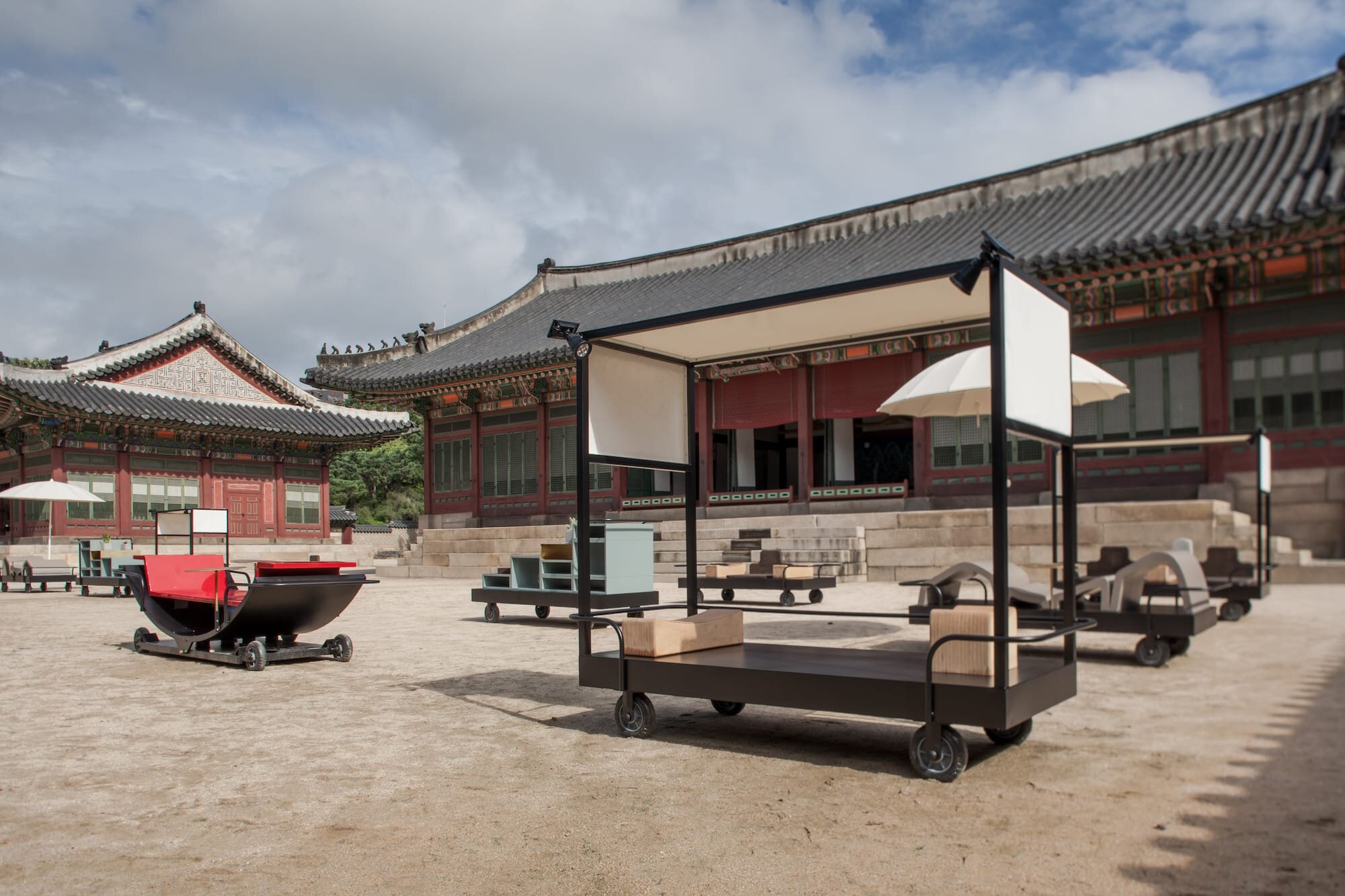
The pushcart has been an ongoing theme for my exploration, as this is a dominant component of Asian cities. The mobility of the pushcarts serves multiple purposes and gives a secondary layer of life to Asian cities. With the impact of climate change and the world’s shifting economy, open air activities and outdoor living is becoming more treasured. The thesis for this exhibition is to design a series of mobile furniture for an emperor in transition. The furniture pieces are designed with wheels. The fact that they are on wheels explores the notion of mobility, displacement, migration as well as the overlap of the service and the served.
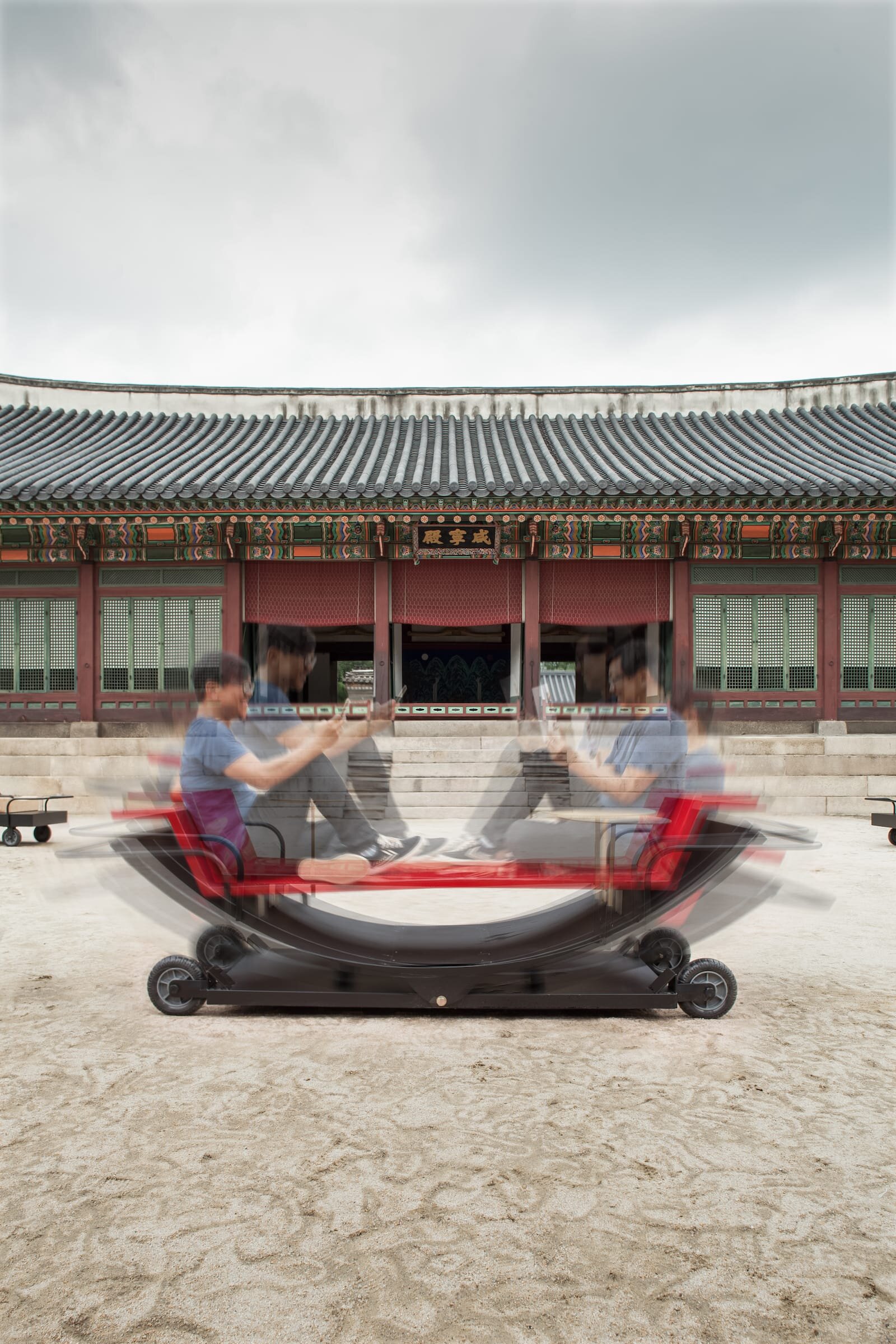
The series of furniture is conceived on four aspects: The ceremonial, the social, the functional, and the playful. Inspired by the imperial carriages (Palanquin) and traditional Korean furniture, the furniture is laid out in a ceremonial order in front of Hamnyeongjeon, like attendants ready to serve the Emperor.
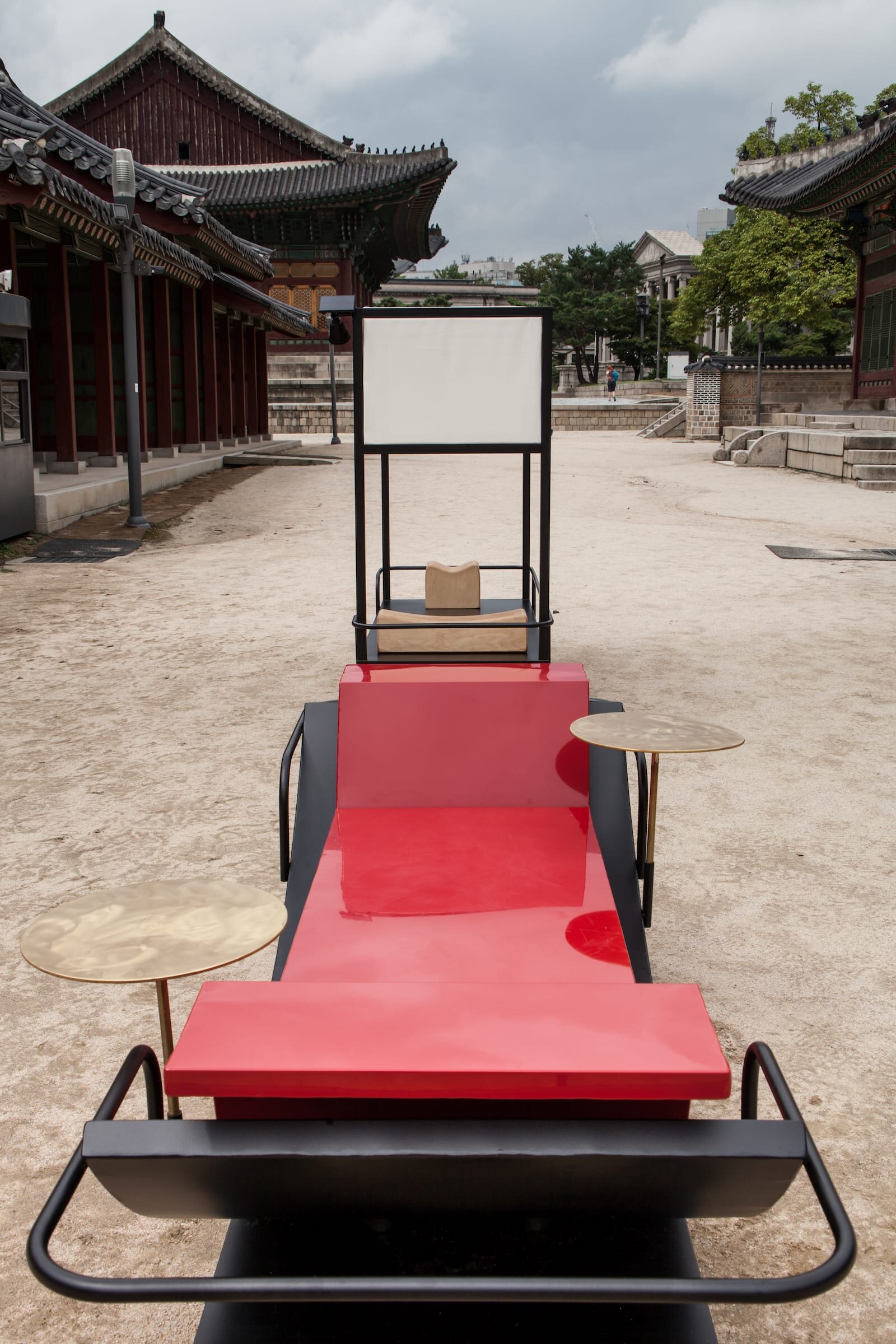
The mobile furniture takes on an Asian aesthetics and exaggerates the horizontal while relating to physical ergonomics. Incorporating contemporary function such as desking and storage implies a contemporary lifestyle which overlaps with tradition. The playful aspect of some pieces contrasts the somber historic description we learn of the palace.

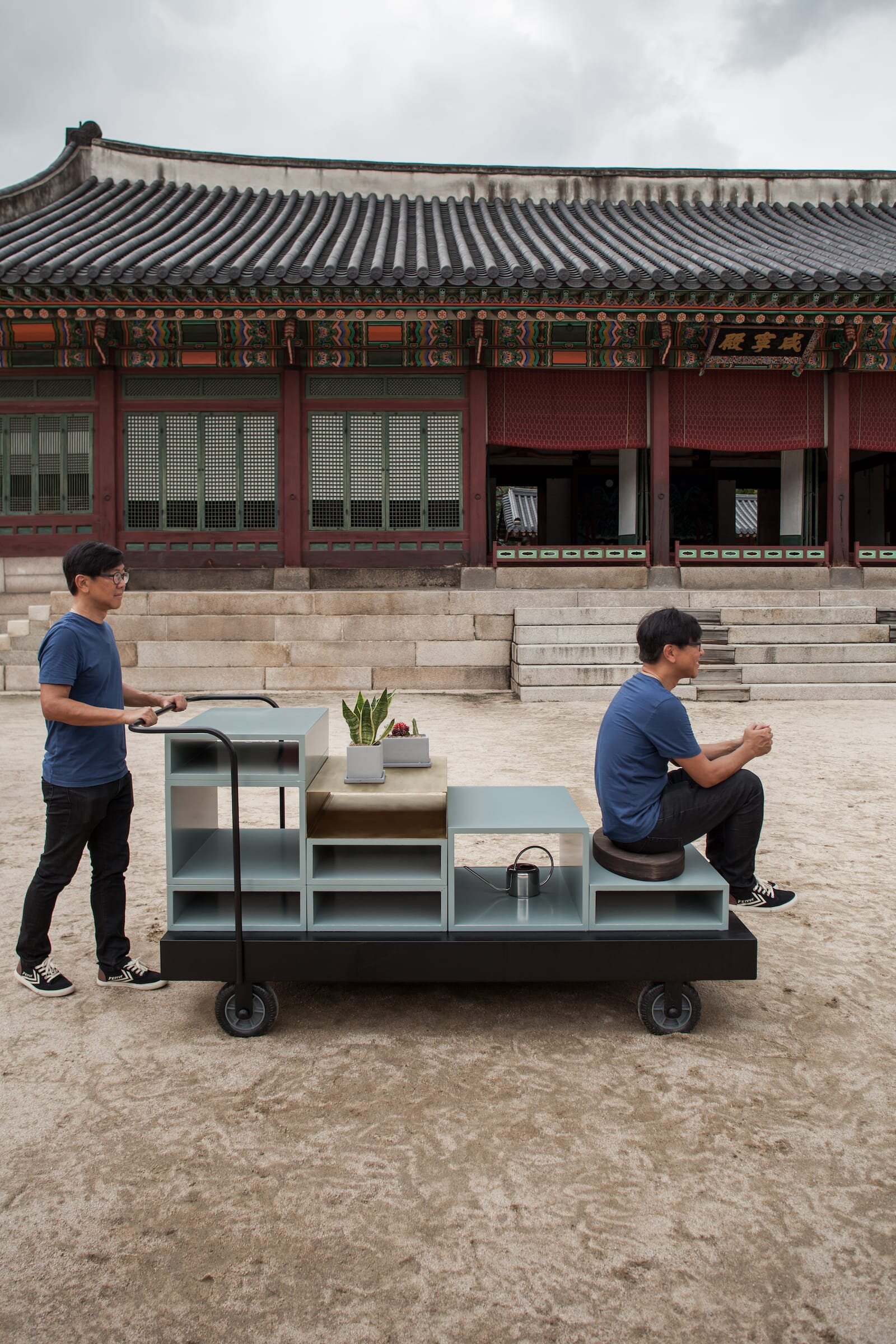
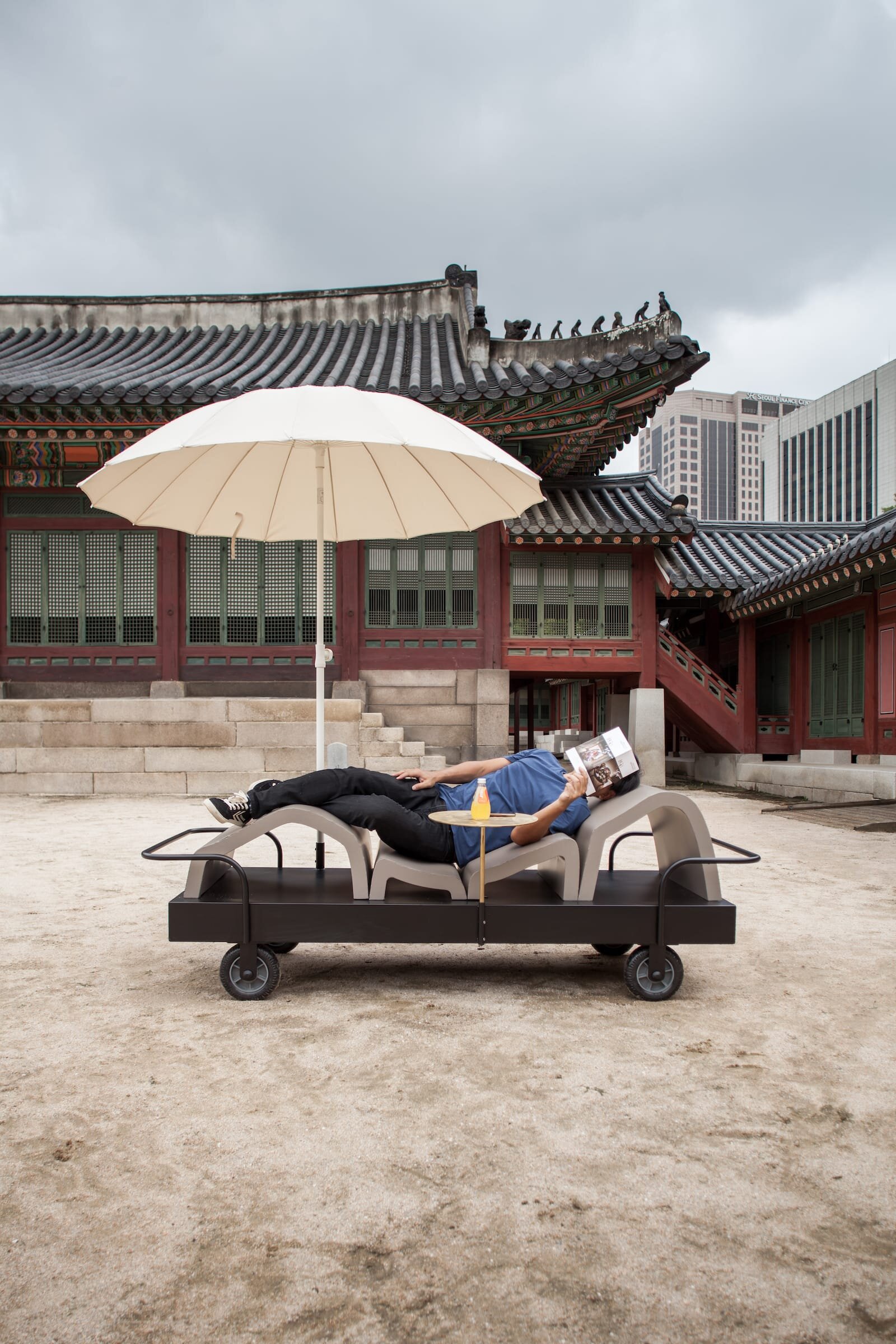
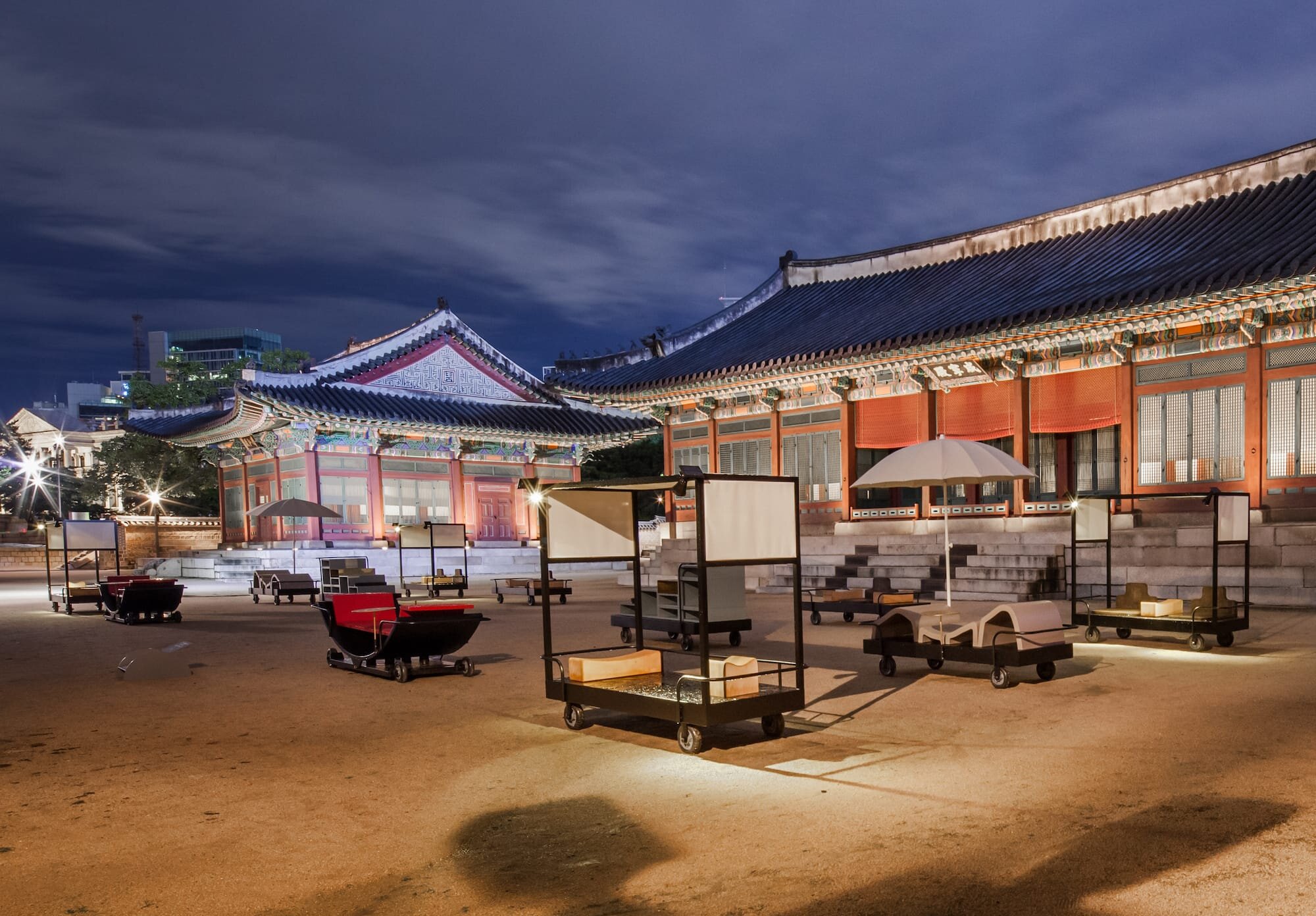
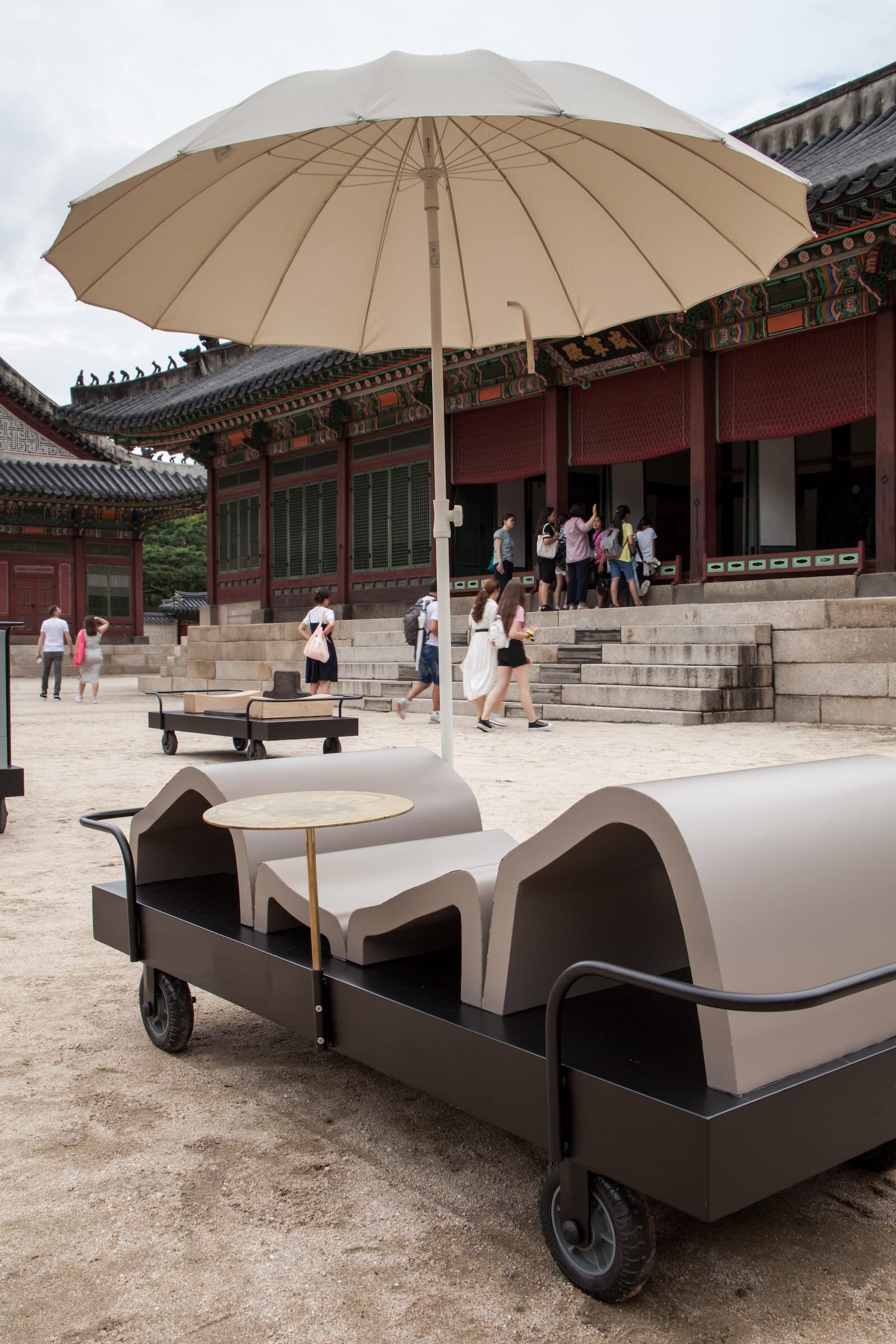
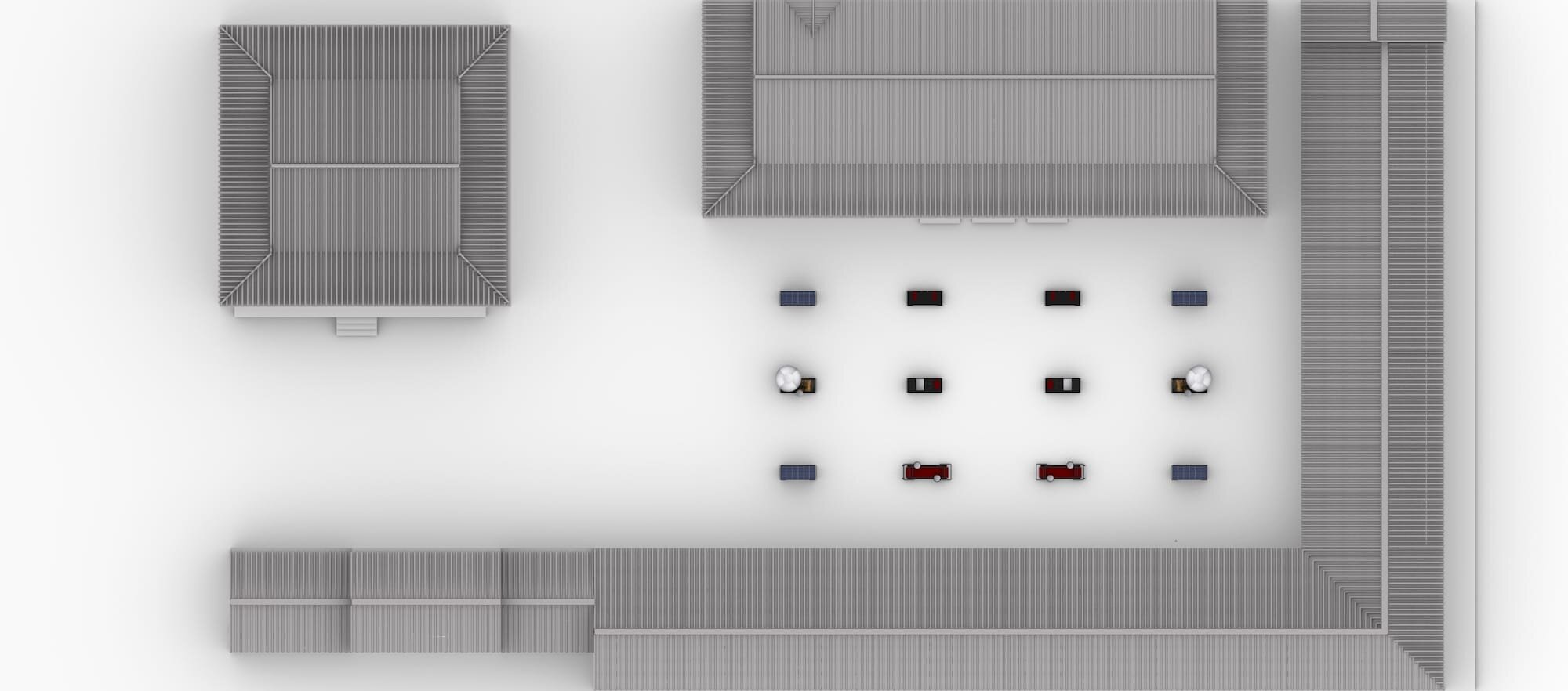
Location
MMCA Deoksugung, MMCA Seoul
Completion
April 2019
Client
National Museum of Modern and Contemporary Art
